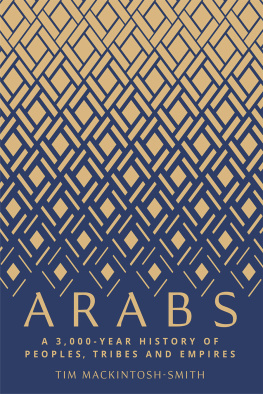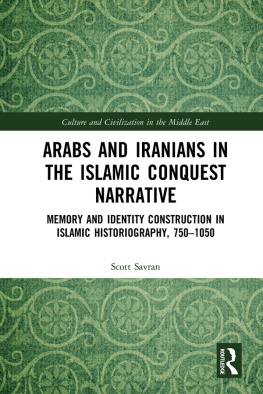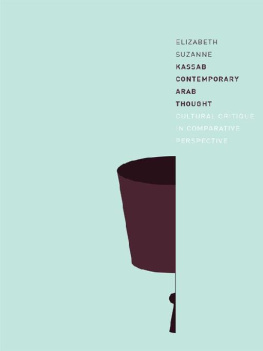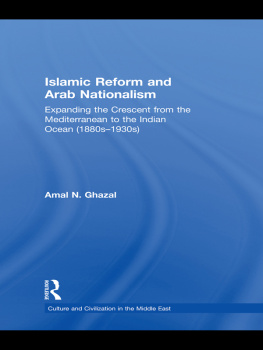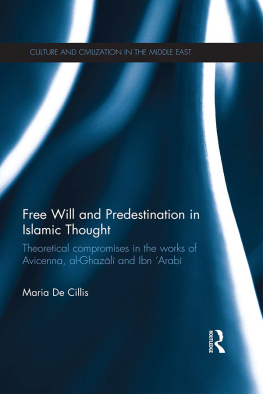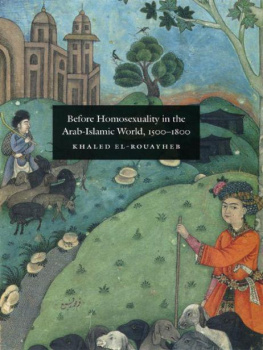All the World Is Awry
All the World Is Awry
Al-Maarr and the Luzmiyyt, Revisited
R. KEVIN LACEY
Cover art: Original watercolor painting of al-Maarr, by Melissa Coury. Used with permission.
Published by State University of New York Press, Albany
2020 State University of New York Press
All rights reserved
Printed in the United States of America
No part of this book may be used or reproduced in any manner whatsoever without written permission. No part of this book may be stored in a retrieval system or transmitted in any form or by any means including electronic, electrostatic, magnetic tape, mechanical, photocopying, recording, or otherwise without the prior permission in writing of the publisher. For information, contact State University of New York Press, Albany, NY
www.sunypress.edu
Library of Congress Cataloging-in-Publication Data
Names: Lacey, R. Kevin, author
Title: All the world is awry / Al-Maarr and the Luzmiyyt, revisited
Description: Albany : State University of New York Press, [2021] | Includes bibliographical references and index.
Identifiers: ISBN 9781438479453 (hardcover : alk. paper) | ISBN 9781438479460 (e-book) | ISBN 9781438479446 (paperback)
Library of Congress Control Number 2020937125
Further information is available at the Library of Congress.
10 9 8 7 6 5 4 3 2 1
CONTENTS
ACKNOWLEDGMENTS
I am indebted to a multitude of colleagues and former instructors of good will for helping me find the inspiration and resolve to have this project see the light of day. They are too numerous to name here, but I trust they are gracious enough not to be disquieted by this. In any event, the anonymity will serve to underscore that any infelicities or shortcomings are entirely my own. For extra special camaraderie in recent years, I owe an extra special word of thanks to Ralph and Melissa Coury. Ralphs scholarship has been extraordinarily helpful and influential. Melissas insights have been valuable, and her art an inspiration. She provided the cover artwork. For their patience and understanding, my immediate familywife, Gladys Maria Varona, and daughters, Alina and Alexaas well as extended family deserve a heartfelt thank you.
Michael Abdelmessih helped in typing portions of the Arabic. Dr. Tayseer Gomaa helped with proofreading the Arabic, checking all citations, and in many instances drawing attention to enhanced understandings. Members of the Acquisitions Department of SUNY Press, especially directors James Peltz and Donna Dixon and editor Amanda Lanne-Camilli, SUNY Press promotional manager Kate R. Seyburyamo, and senior production editor Eileen Nizer have all been exceedingly patient and attentive in overseeing the final stages of production.
An earlier version of chapter 4, part 4 was published in The Muslim World (JanuaryApril 1995).
A NOTE ON TRANSLITERATION
For the most part, the system I followed is that used by the International Journal of Middle East Studies (IJMES). The most notable exceptions are (1) is represented by ah and not a; and (2) the elision of vowels preceding the hamzah () that requires elision ( ) is not represented with and the dropping of the following vowel. Thus, something like , for example, will be transliterated as al-Ful wa al-Ghyt and not al-Ful wal-Ghyt. To give another example, becomes f al-shir and not fil-shir. Exceptions are made, however, in the case of citing authors whose approach to transliteration represents the elision preceding with character and the dropping of the following vowel.
In some casesfor example, some technical terms or names of people, places, or book titlesboth the Arabic and the English-language transliterations are given, essentially for the sake of assuring clarification.
Book or journal titles in transliterated Arabic follow the more conventional approach in English with respect to capitalization. Thus, all major words in a title are capitalized. Nouns (proper or otherwise) commonly found in English-language sources with standard English-language dictionary renderings (e.g., Baghdad, Mecca, Medina, Iraq) are left in those renderings (meaning first and foremost that they are without diacritics).
With only one or two exceptions, the names of Arabic authors that in English-language sources are commonly known in their Anglicized forms are kept in the Anglicized forms.
PART 1
CHAPTER ONE
The Man
A Bibliographical Sketch of Ab al-Al al-Maarr
Ab al-Al al-Maarr/ was born in 973 Common Era (363 Islamic Era) in the small Syrian town of Maarrat al-Numn ( ), from which is derived his laqab () or agnomen. The town is situated in northern Syria about 20 miles south of the city of Aleppo. It lies in a semiarid region that is devoid of running water, although with the aid of cisterns and wells the population has long been able to sustain a fairly bountiful agriculture consisting of vineyards, orchards (olives, pistachios, almonds), and fields of wheat and barley. Writing in the fifth century of the Islamic Era, the Persian poet, philosopher, and traveler Nir-i Khusraw ( ), passing through Maarrat al-Numn on a trip the principal destinations of which were Mecca and Cairo, could write of having seen the towns productive agriculture as well as flourishing bazaars:
.
In the seventh century of the Islamic Era (hereafter IE), the Andalusian traveler and geographer Ibn Jubayr speaks of the town having arable land () devoted entirely to olive, fig, and pistachio trees, adding that he regarded Maarrat al-Numn as one of Gods most fertile and productive lands ( ). It is a small, lovely city most of whose trees are pistachio and fig ( ), wrote the eighth-century (IE) Moroccan geographer Ibn Baah/ upon his visit.
Maarrat al-Numn lies at strategic crossroads running both north and south and east and west. To the south lie the cities of amh (), im (), and, finally, Damascus. The road north leads to Antakya (Antioch) and skenderun in present-day Turkey ( and respectively in the Arabic). To the west lies Latakia () on the Mediterranean, and to the east, the upper reaches of the Euphrates, which allow for riparian access to the heartlands of Iraq, including most notably Baghdad. In al-Maarrs time, the area stretching on the south-to-north axis from amh through Maarrat al-Numn and on to Aleppo was regarded as the locus for the frontier metropolitan strongholds (), the first line of defense against Byzantine Christian irredentism directed against Syria both as a valuable possession in and of itself and as an avenue of access to even more valuable territories of the Islamic commonwealth to the south (e.g., Palestine and Egypt). These frontier strongholds were also stepping stones for counteroffensives by organized Muslim armed forces. At the same time, in what amounted to a tripartite geopolitical dismemberment of Syria by rivals, the expansionist Isml Sh (Fimid persuasion) imm-caliphs in Cairo, and the semiautonomous amdnid/ princes (who were Shites but non-Fimid, i.e., probably Ithnashar) centered in Aleppo, were active in promoting and protecting their own dynastic interests in the area. For the Fimid imm-caliphs, this meant especially the attempt to establish suzerainty over Damascus if not areas to the north as well; for the mdnids, this meant control of Aleppo if not as well amh and im and by extension Maarrat al-Numn (administratively regarded as falling under the suzerainty of im or amh the latter of which in turn was subject to the oversight of Aleppo). Added to this mix of rivalries were (1) the growing political ambitions of the Ban Kilb/ , Arab bedouins who had migrated to northern Syria from the Najd in the Arabian peninsula (eventually to establish their own dynasty centered in Aleppo), and (2) the ambitions of one or another slave page () or slave soldier () and the troops at their disposal, who were of diverse ethnic backgrounds (e.g., Turkish, Kurdish, and Daylam) with decidedly fluid loyalties.



